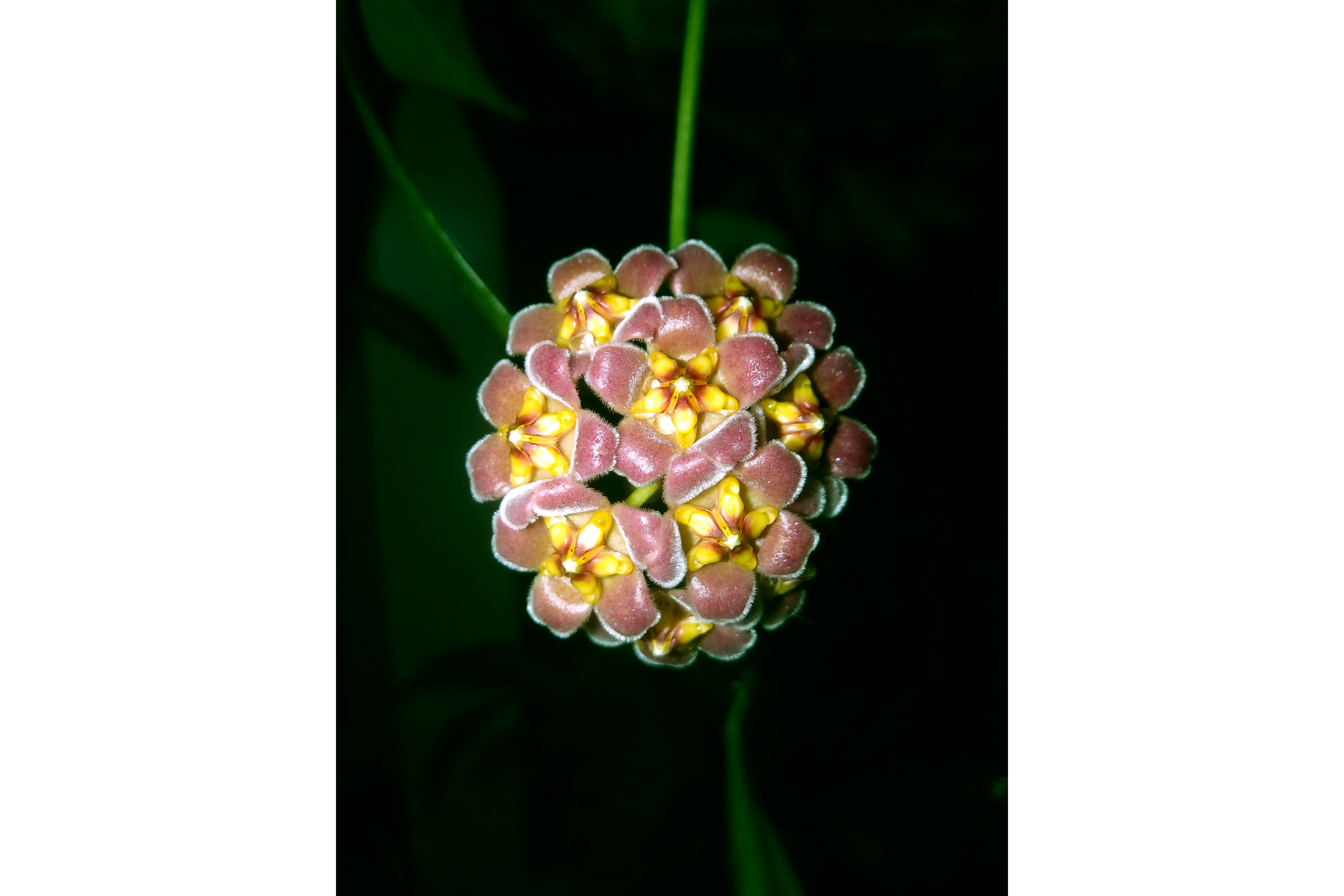Pink flowered wax plant
(Hoya davidcummingii)

Description
Hoya valmayoriana is an endemic species of porcelainflower or wax plant found in the Philippines, an Asclepiad species of flowering plant in the dogbane family Apocynaceae described in 2012 by Kloppenburg, et al.. Hoya valmayoriana belongs to the genus Hoya. The species corolla in its flower is peach-colored. 42-43 Originally, this species together with 7 other hoyas, were collected in October 1988 by David M. Cummings(collection number DMC 1622), ¾ kilometer North of Lake Bulusan, in a dense forest along the roadside. The distance of which is from the junction of the main road going along the road towards Lake Bulusan, Sorsogon Province, Philippines - the same location as Hoya davidcummingii Kloppenburg (1995). Mr. Cummings emailed the first author in May 2012 to confirm. The specific epithet in the scientific name, valmayoriana named in honor of Dr. Helen Valmayor, a retired professor of the Department of Horticulture, University of the Philippines Los Baños, Laguna, Philippines. Hoyas are evergreen perennial creepers or vines or rarely, shrubs. They often grow epiphytically on trees; some grow terrestrially, or occasionally in rocky areas. They climb by twining, and with the employment of adventitious roots. Larger species grow 1–18 m (3–59 ft), or more, with suitable support in trees. They have simple entire leaves, arranged in an opposite pattern, that are typically succulent. Leaves may exhibit a variety of forms, and may be smooth, felted or hairy; venation may be prominent or not, and many species have leaf surfaces flecked with irregular small silvery spots. The flowers appear in axillary umbellate clusters at the tip of peduncles. Hoya peduncles are commonly referred to as spurs. In most species these spurs are perennial and are rarely shed. Each flowering cycle increases the length of the spur, and in the larger species can eventually reach 27 cm (11 in) or more. Flowers vary in size from 3 mm (1⁄8 in) (Hoya bilobata Schltr.) to over 95 mm (3+3⁄4 in) (in H. lauterbachii K. Schuman) in diameter. Flower form is typically star-shaped, with five thick, waxy, triangular petals, topped with another star-shaped structure, the corona. Colours on most species range from white to pink; there are species that exhibit yellow to orange, dark reds to near-black, and there are green flowers. Many are sweetly scented. and most produce abundant nectar.
Taxonomic tree:







